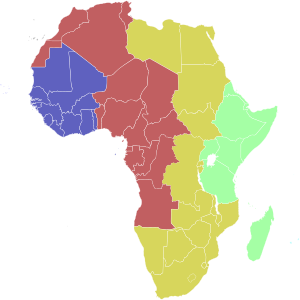
Greenwich Mean Time
Time zone of Western Europe, same as WET / From Wikipedia, the free encyclopedia
Dear Wikiwand AI, let's keep it short by simply answering these key questions:
Can you list the top facts and stats about Greenwich Mean Time?
Summarize this article for a 10 years old
Greenwich Mean Time (GMT) is the mean solar time at the Royal Observatory in Greenwich, London, counted from midnight. At different times in the past, it has been calculated in different ways, including being calculated from noon;[1] as a consequence, it cannot be used to specify a particular time unless a context is given. The term 'GMT' is also used as one of the names for the time zone UTC+00:00 and,[2] in UK law, is the basis for civil time in the United Kingdom.[3][lower-alpha 1]
| Greenwich Mean Time | |
|---|---|
| Time zone | |
| UTC offset | |
| GMT | UTC±00:00 |
| Current time | |
| 01:50, 30 September 2023 GMT [refresh] | |
| Observance of DST | |
| DST is observed throughout this time zone. | |

| Light Blue | Western European Time / Greenwich Mean Time (UTC) |
| Blue | Western European Time / Greenwich Mean Time (UTC) |
| Western European Summer Time / British Summer Time / Irish Standard Time (UTC+1) | |
| Red | Central European Time (UTC+1) |
| Central European Summer Time (UTC+2) | |
| Yellow | Eastern European Time / Kaliningrad Time (UTC+2) |
| Ochre | Eastern European Time (UTC+2) |
| Eastern European Summer Time (UTC+3) | |
| Green | Moscow Time / Turkey Time (UTC+3) |
| Turquoise | Armenia Time / Azerbaijan Time / Georgia Time / Samara Time (UTC+4) |
▉▉▉ Dark colours: Summer time observed

| UTC-01:00 | Cape Verde Time[a] |
| UTC±00:00 | Greenwich Mean Time |
| UTC+01:00 | |
| UTC+02:00 | |
| UTC+03:00 | East Africa Time |
| UTC+04:00 |
b Mauritius and the Seychelles are to the east and north-east of Madagascar respectively.
English speakers often use GMT as a synonym for Coordinated Universal Time (UTC).[4] For navigation, it is considered equivalent to UT1 (the modern form of mean solar time at 0° longitude); but this meaning can differ from UTC by up to 0.9 s. The term GMT should thus not be used for purposes that require precision.[5]
Because of Earth's uneven angular velocity in its elliptical orbit and its axial tilt, noon (12:00:00) GMT is rarely the exact moment the Sun crosses the Greenwich Meridian[lower-alpha 2] and reaches its highest point in the sky there. This event may occur up to 16 minutes before or after noon GMT, a discrepancy described by the equation of time. Noon GMT is the annual average (the arithmetic mean) moment of this event, which accounts for the word "mean" in "Greenwich Mean Time".[lower-alpha 3]
Originally, astronomers considered a GMT day to start at noon,[lower-alpha 4] while for almost everyone else it started at midnight. To avoid confusion, the name Universal Time was introduced in 1928 to denote GMT as counted from midnight.[7][8] Today, Universal Time usually refers to UTC or UT1.[9]
The term "GMT" is especially used by United Kingdom bodies, such as the BBC World Service, the Royal Navy, and the Met Office; and others particularly in Arab countries, such as the Middle East Broadcasting Centre and OSN.